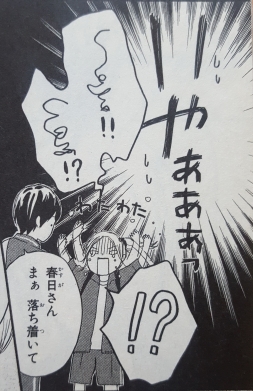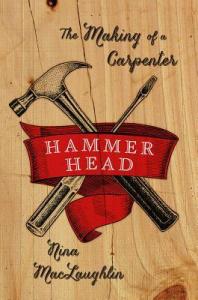In medical school, no one teaches you how to let a patient die.
Zitter started her career as an ICU doctor, one of the more intense specialties in medicine. It’s your job to do stuff to turn around patient problems – put them on breathing machines and kidney machines when organs stop functioning, place a tube so they can be fed, use medications to stabilize blood pressure or prevent a clot. It’s your job save a patient’s life, so why would you stop when there’s another procedure or a different medication you’ve yet to try?
This, she says, is why doctors are so awful at helping their patients have a good death. A patient dying is akin to failure and no one, especially highly trained professionals with a wealth of options and technology at their disposal, wants to fail. Add in a family that wants you to “do everything”, and it’s a recipe for more and more machines and care that will make it impossible for the patient to die peacefully at home. Zitter calls it the “end-of-life conveyor belt” and she got certified in palliative care to help people navigate and possibly avoid it.
This book is an extension of that work. She details how and why we got to this point and what we – both patients and health care professionals – can do to guide people towards the death they want. Patient stories are woven through to illustrate what things look like when they go right, go wrong, or just… go. End of life care is a minefield of pitfalls and potential missteps and she doesn’t shy away from any of it.
It’s a bit of a side note, but I want to give Zitter a great big hug for discussing my profession of medical interpreting in a chapter about cultural values. She includes the interpreter as part of the care team, asking about cultural differences and how to approach a thorny topic. In my experience interpreters can be treated like walking dictionaries, more a thing than a person, and it means a lot to me that Zitter accurately depicts and advocates for the important work we do.
The author reads the audiobook and I really liked it, though I did have to crank up the speed a little bit more than usual. I liked it so much that I went back and relistened to sections so I could add them to my notebook word for word. Here’s some of the wisdom she drops:
The human being is unknowable. Unless, maybe, you ask.
While I may be the expert on the patient’s disease I am not the expert on the patient.
Sometimes it isn’t that the doctor needs to work harder to elicit the patient’s values, but that those values are simply different from the doctor’s. Yet another lesson in listening.
An amazing must read for anyone with anything do to in medicine, and highly recommended to everyone else.
…and because I have an inkling it will come up in the comments – no, I haven’t read Atul Gawande’s Being Mortal yet. 🙂 I hope to get to it sooner rather than later. I’m curious to see how a surgeon approaches these same issues and where the two doctors’ views converge and divide.

 I can’t believe the month is almost over! Nonfiction November has been my first blogging event of this scale and I’m having a wonderful time. I’ve met a ton of wonderful people, and heaven knows they’ve recommended some wonderful books. Here are a few that have made it onto my To Be Read list:
I can’t believe the month is almost over! Nonfiction November has been my first blogging event of this scale and I’m having a wonderful time. I’ve met a ton of wonderful people, and heaven knows they’ve recommended some wonderful books. Here are a few that have made it onto my To Be Read list: The Solace of Open Spaces by Gretel Ehrlich
The Solace of Open Spaces by Gretel Ehrlich Forensics: What Bugs, Burns, Prints, DNA and More Tell Us About Crime
Forensics: What Bugs, Burns, Prints, DNA and More Tell Us About Crime I finally stopped in a used bookstore I pass on my commute and, oh my. Every hardcover is less than four dollars US, some paperbacks are less than a buck, and the manga. My goodness, the manga – full sets impeccably shelved, calling to me. And it was 10% off day.
I finally stopped in a used bookstore I pass on my commute and, oh my. Every hardcover is less than four dollars US, some paperbacks are less than a buck, and the manga. My goodness, the manga – full sets impeccably shelved, calling to me. And it was 10% off day. Even so it was a quick read. The style is typical shojo with lots of white space and wispy lines, and while the art is average some frames stick out as particularly well framed or comical. I love Kasuga’s reaction when Koga sees a beetle in her hair:
Even so it was a quick read. The style is typical shojo with lots of white space and wispy lines, and while the art is average some frames stick out as particularly well framed or comical. I love Kasuga’s reaction when Koga sees a beetle in her hair: Newly arrived in New Fiddleham, New England, 1892, and in need of a job, Abigail Rook meets R. F. Jackaby, an investigator of the unexplained with a keen eye for the extraordinary–including the ability to see supernatural beings. Abigail has a gift for noticing ordinary but important details, which makes her perfect for the position of Jackaby’s assistant. On her first day, Abigail finds herself in the midst of a thrilling case: A serial killer is on the loose. The police are convinced it’s an ordinary villain, but Jackaby is certain it’s a nonhuman creature, whose existence the police–with the exception of a handsome young detective named Charlie Cane–deny.
Newly arrived in New Fiddleham, New England, 1892, and in need of a job, Abigail Rook meets R. F. Jackaby, an investigator of the unexplained with a keen eye for the extraordinary–including the ability to see supernatural beings. Abigail has a gift for noticing ordinary but important details, which makes her perfect for the position of Jackaby’s assistant. On her first day, Abigail finds herself in the midst of a thrilling case: A serial killer is on the loose. The police are convinced it’s an ordinary villain, but Jackaby is certain it’s a nonhuman creature, whose existence the police–with the exception of a handsome young detective named Charlie Cane–deny. A nonfiction book doesn’t need to leave literary style behind! It can be as elevated David Foster Wallace’s
A nonfiction book doesn’t need to leave literary style behind! It can be as elevated David Foster Wallace’s  I love reading to learn and some books have blown my mind wide open. There’s
I love reading to learn and some books have blown my mind wide open. There’s  That may not sound exciting, but stick with me! Documents from their time, often with analysis or historical background, can be transporting.
That may not sound exciting, but stick with me! Documents from their time, often with analysis or historical background, can be transporting.  It doesn’t make sense considering how terrified I am of flames, but I am drawn to books about fire. It can be a well-known historical fire (
It doesn’t make sense considering how terrified I am of flames, but I am drawn to books about fire. It can be a well-known historical fire ( In neurosurgery, more than in any other branch of medicine, the doctor’s oath to “do no harm” holds a bitter irony. Operations on the brain carry grave risks. Every day, leading neurosurgeon Henry Marsh must make agonizing decisions, often in the face of great urgency and uncertainty.
In neurosurgery, more than in any other branch of medicine, the doctor’s oath to “do no harm” holds a bitter irony. Operations on the brain carry grave risks. Every day, leading neurosurgeon Henry Marsh must make agonizing decisions, often in the face of great urgency and uncertainty. In a world that denies emotions, where the ruling Psy punish any sign of desire, Sascha Duncan must conceal the feelings that brand her as flawed. To reveal them would be to sentence herself to the horror of “rehabilitation” – the complete psychic erasure of everything she ever was…
In a world that denies emotions, where the ruling Psy punish any sign of desire, Sascha Duncan must conceal the feelings that brand her as flawed. To reveal them would be to sentence herself to the horror of “rehabilitation” – the complete psychic erasure of everything she ever was…


 Mary Davies lives and works in Austin, Texas, as an industrial engineer. She has an orderly and productive life, a job and colleagues that she enjoys—particularly a certain adorable, intelligent, and hilarious consultant. But something is missing for Mary. When her estranged and emotionally fragile childhood friend Isabel Dwyer offers Mary a two-week stay in a gorgeous manor house in Bath, Mary reluctantly agrees to come along, in hopes that the holiday will shake up her quiet life in just the right ways. But Mary gets more than she bargained for when Isabel loses her memory and fully believes that she lives in Regency England.
Mary Davies lives and works in Austin, Texas, as an industrial engineer. She has an orderly and productive life, a job and colleagues that she enjoys—particularly a certain adorable, intelligent, and hilarious consultant. But something is missing for Mary. When her estranged and emotionally fragile childhood friend Isabel Dwyer offers Mary a two-week stay in a gorgeous manor house in Bath, Mary reluctantly agrees to come along, in hopes that the holiday will shake up her quiet life in just the right ways. But Mary gets more than she bargained for when Isabel loses her memory and fully believes that she lives in Regency England. By grappling with novels, recipes, travelogues, pop culture, and his own upbringing, Naben Ruthnum depicts how the distinctive taste of curry has often become maladroit shorthand for brown identity. With the sardonic wit of Gita Mehta’s Karma Cola and the refined, obsessive palette of Bill Buford’s Heat, Ruthnum sinks his teeth into the story of how the beloved flavor calcified into an aesthetic genre that limits the imaginations of writers, readers, and eaters. Following in the footsteps of Salman Rushdie’s Imaginary Homelands, Curry cracks open anew the staid narrative of an authentically Indian diasporic experience.
By grappling with novels, recipes, travelogues, pop culture, and his own upbringing, Naben Ruthnum depicts how the distinctive taste of curry has often become maladroit shorthand for brown identity. With the sardonic wit of Gita Mehta’s Karma Cola and the refined, obsessive palette of Bill Buford’s Heat, Ruthnum sinks his teeth into the story of how the beloved flavor calcified into an aesthetic genre that limits the imaginations of writers, readers, and eaters. Following in the footsteps of Salman Rushdie’s Imaginary Homelands, Curry cracks open anew the staid narrative of an authentically Indian diasporic experience.